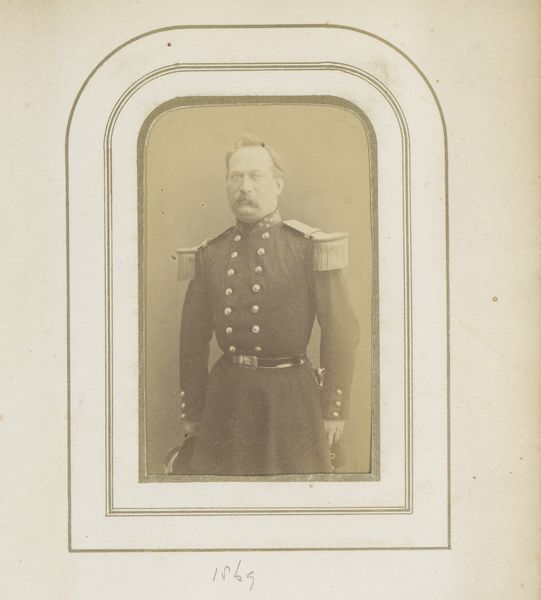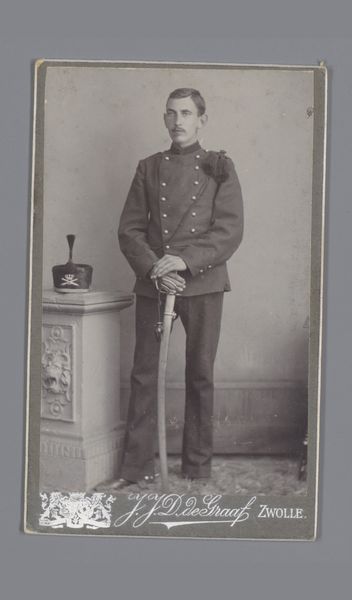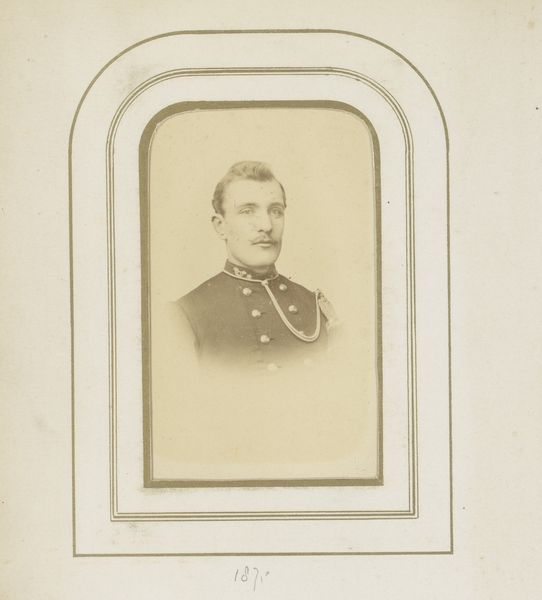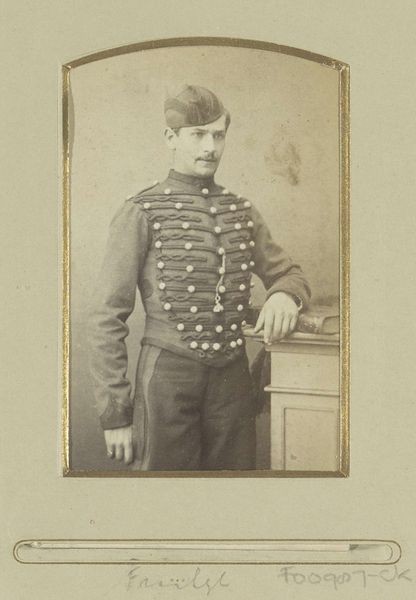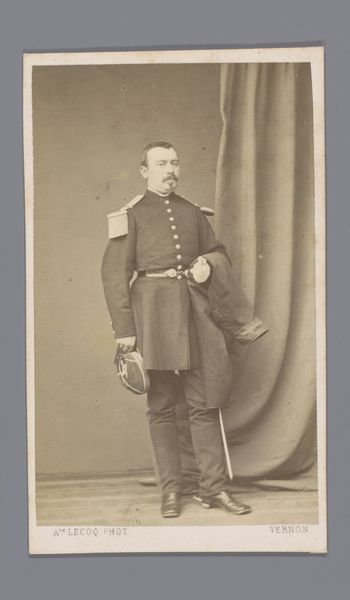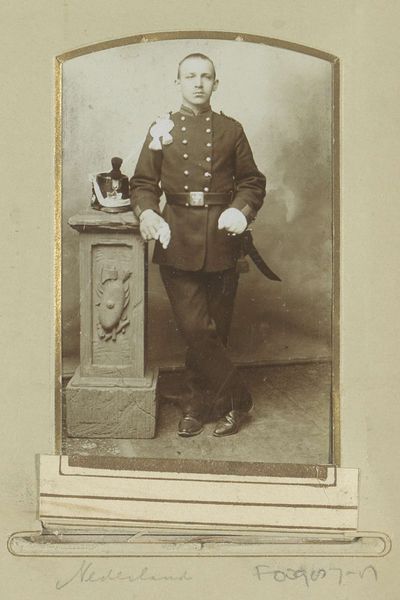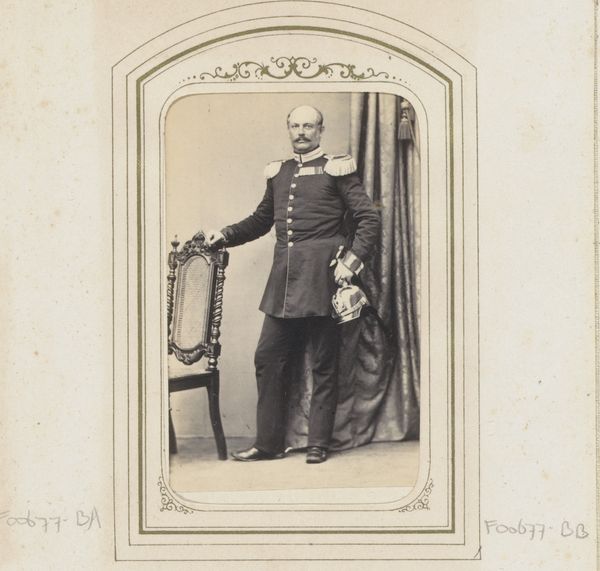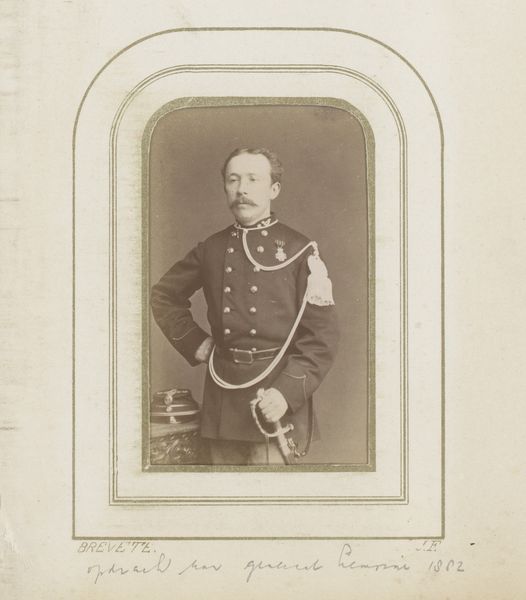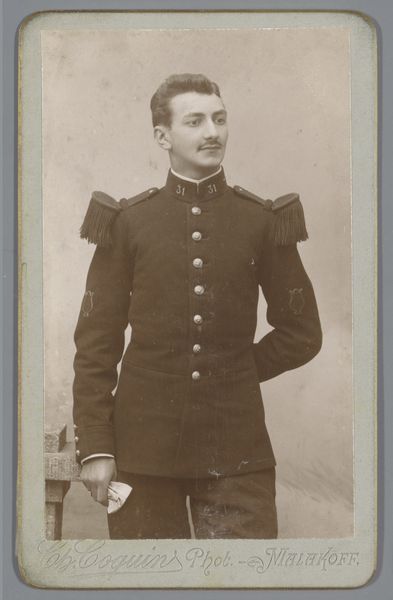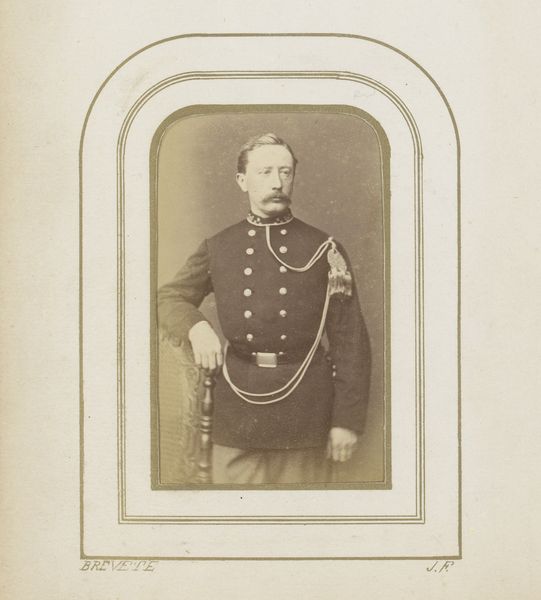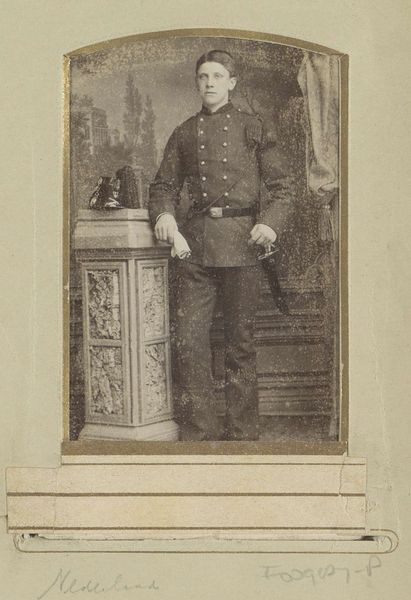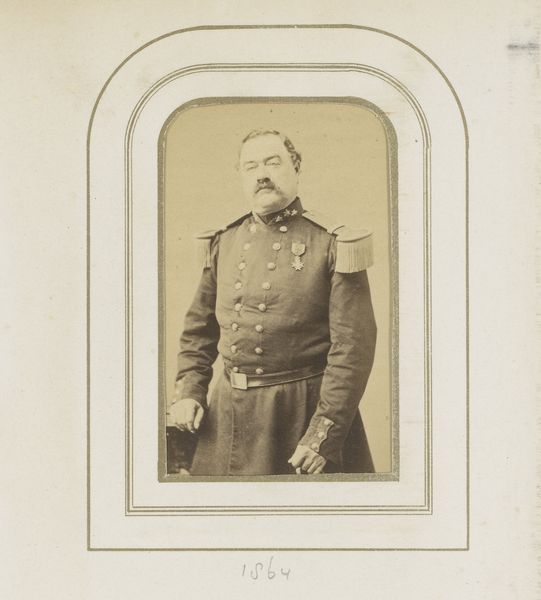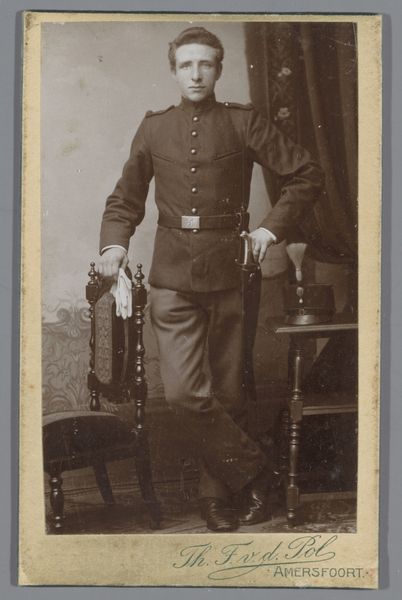
Portret van een Belgische militair, omlijst met geweer, trommel, miniatuurportret van koning Leopold II van België en een wimpel met de tekst 'souvenir du regiment Anvers' after 1909
0:00
0:00
photography
#
portrait
#
photography
#
genre-painting
#
realism
Dimensions: height 163 mm, width 106 mm
Copyright: Rijks Museum: Open Domain
Editor: Here we have a photograph from after 1909 entitled, "Portret van een Belgische militair, omlijst met geweer, trommel, miniatuurportret van koning Leopold II van België en een wimpel met de tekst 'souvenir du regiment Anvers'". Quite a mouthful. It features a portrait of a Belgian soldier framed with military symbols. The sepia tone gives it such an old-world feel. What symbols or imagery stand out to you? Curator: The photograph, with its sepia tones and deliberate framing, presents a fascinating construction of identity and memory. The framing with the rifle, drum, and banner create a specific narrative, and the miniature portrait of King Leopold II—well, that adds a layer of complex historical baggage. Editor: Complex baggage? Could you explain? Curator: Certainly. Leopold II's reign, particularly his ventures in the Congo, is fraught with controversy. By including his image, even in miniature, the photograph evokes a specific era of Belgian history, one of national pride intertwined with colonial exploitation. What emotional effect does this intentional pairing elicit from you? Editor: I see… I suppose it creates a sense of both pride and unease simultaneously. It feels like a way of preserving not just a likeness but also a specific, perhaps idealized, version of history. Curator: Precisely. The drum, the rifle, the "souvenir" banner—they all contribute to constructing this narrative. The image becomes less about an individual and more about an era, a set of values, a particular idea of Belgian identity. It’s an image meant to instill a cultural memory, a way of connecting the individual to a larger historical narrative, carefully curated to evoke specific emotions and values. Editor: That's insightful! I hadn't considered the role of the framing devices quite so much. The photograph then really operates as a kind of symbolic archive? Curator: Indeed, it freezes a moment, imbuing it with cultural weight, prompting viewers to engage with layered narratives of identity and history. And, as we decode it, we gain access to not just the depicted scene but also the values it wishes to preserve and transmit. Editor: Thank you! I’ll never look at a portrait the same way.
Comments
No comments
Be the first to comment and join the conversation on the ultimate creative platform.
